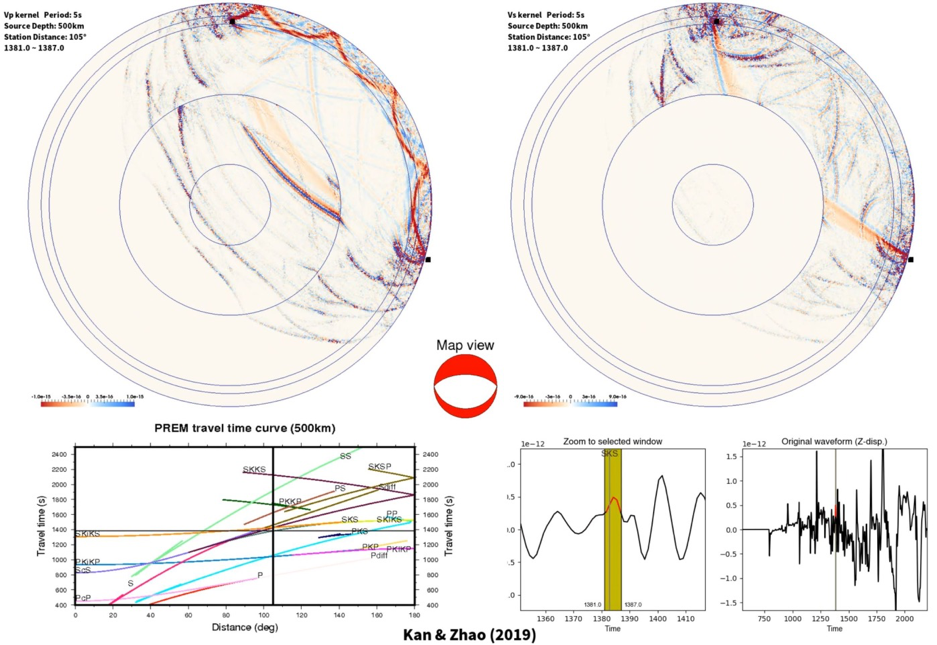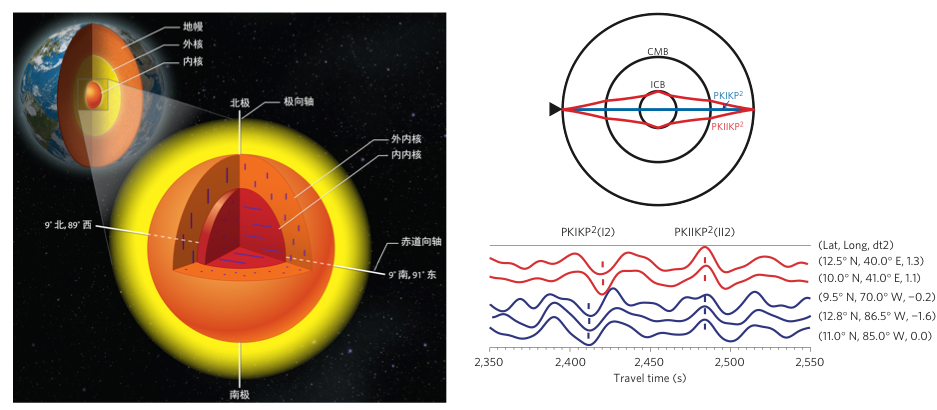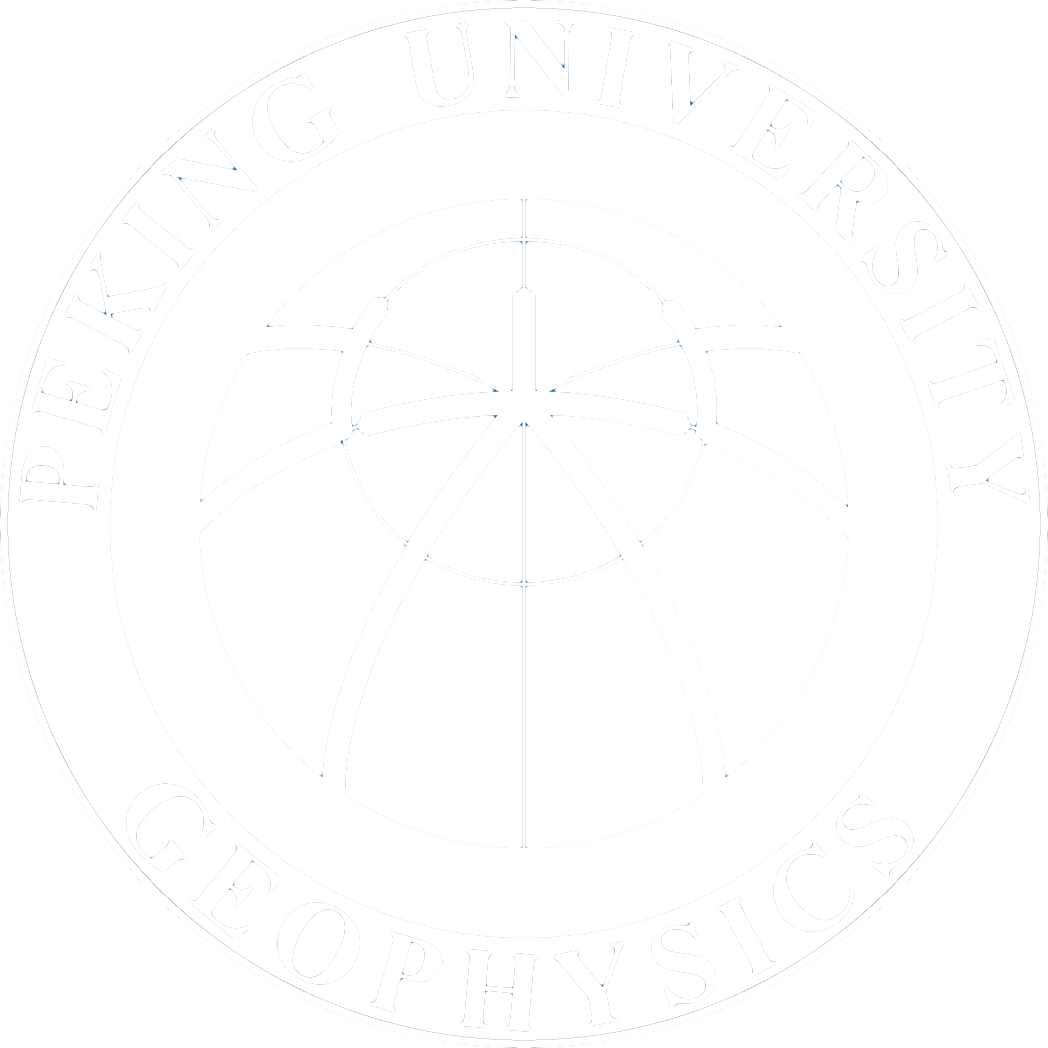Zhao, Li
Research interests include heoretical seismology, structural seismology and earthquake source kinematics; with experiences in the theoretical studies of the Earth’s free oscillations and seismic wave propagation. One of the earliest seismologists to develop the finite-frequency (or full waveform) seismic tomography technique, which has been applied to multi-scale seismic tomography of regional isotropic and anisotropic structures in southern Africa, Taiwan and southern California. Also developed practical algorithms for earthquake finite-source slip distribution inversion in complex 3D Earth models. Conducted research on waveform inversions for earthquake focal mechanisms and regional tectonic stress field.

Sensitivity kernels of the finite-frequency travel time of SKS wave for P and S wave speeds, showing obvious contribution of pPPPP wave to SKS splitting. From Kan & Zhao (2019).
Song, Xiaodong
Main interests include structure seismology and seismic methods. Of particular interests are structures of the deep interior of the earth (core and lowermost mantle) and crust and lithosphere of China and east Asia. Methods involve understanding wiggles of seismograms (seismic data analyses, synthetic seismograms, waveform modeling) or processing of large quantity of data (tomographic inversions and joint inversions). Seismic data used include travel times, waveforms, and noise interferometry.

Inner-inner core with equatorial anisotropy from auto-correlation of earthquake coda. From Wang et al. 2015 Nature Geosciences.
Ge, Zengxi
Interests include computational seismology and earthquake source kinematics. He focuses on seismic wave propagation in lateral heterogeneous medium, the excitation, propagation and attenuation characteristics of high frequency seismic regional phases (Lg waves), and imaging of the source rupture process and the internal structure of the earth using seismic observation data.
Zhang, Haiming
Interested fields include theoretical seismology and earthquake source dynamics. Over many years, he is committed to the calculation method of theoretical seismograms at regional scale and the study of earthquake source dynamics related to the coseismic processes based on the boundary integral equation method. Special attention of his research is paid to the dynamic process of fault rupture in complex fault system under the influence of the earth's surface and related seismological problems.
Yue, Han
Seismic waves are major probes to study activities of fault systems. We can adopt seismic analysis methods, e.g. inversion, forward modeling, imaging and relocation, to resolve the fault activities at different scales. Prof. Yue’s research focuss on joint inversion, multi-point-source representation, back-projection techniques to resolve the rupture process of great earthquakes; micro-seismicity detection and relocation and earth structure imaging.

Rupture process of 2016 Kumamoto Japan earthquake from seismic, InSAR, and geodetic observations. From Yue et al., 2017.
